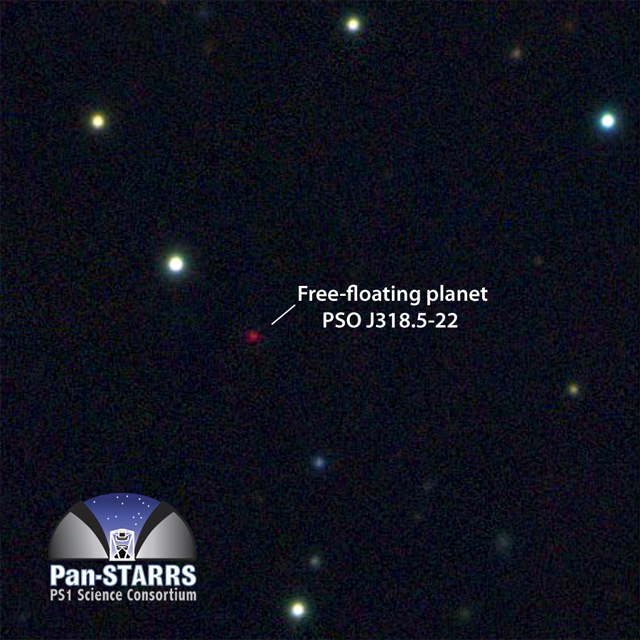In space, discovered a strange lonely planet without a star

Artistic representation of PSO J318.5-22
The Astrophysical Journal Letters published an article describing an exceptionally rare discovery - the first of its kind on a planet that flies freely in outer space. Scientists have no idea where the planet PSO J318.5-22 came from and where its star disappeared.
The age of PSO J318.5-22 is estimated at 12 million years, which is very small by cosmic standards, that is, the planet literally just formed. The gas giant weighing six times the size of Jupiter is now at a distance of 80 light years from Earth.
They discovered the planet by accident when they started a program to search for brown dwarfs on the data taken by the Hawaiian Pan-STARRS 1 (PS1) telescope. Because of their extremely low temperatures, these stars glow very faintly in the red range. The search program processed 4 petabyte of photos and issued PSO J318.5-22 as one of the anomalous results. The object was much redder than the most red dwarfs.
')
Additional studies have shown that the properties of this gas giant are similar to those of similar gas giants around young stars, but only here the star is absent.

“We have never before seen an object like this freely flying in space,” says Dr. Michael Liu from the Institute of Astronomy at the University of Hawaii. “I often wondered if such solitary objects exist in the Universe, and now we know that this is so.”
Recently, thousands of planets have already been discovered outside the solar system, but very few of them can be directly observed through a telescope. Even if it is possible, the presence of a number of bright luminaries hinders their study. In the case of the planet PSO J318.5-22, there is no interference, so scientists have a rare opportunity to study how gas giants like Jupiter develop soon after birth.
Source: https://habr.com/ru/post/197268/
All Articles